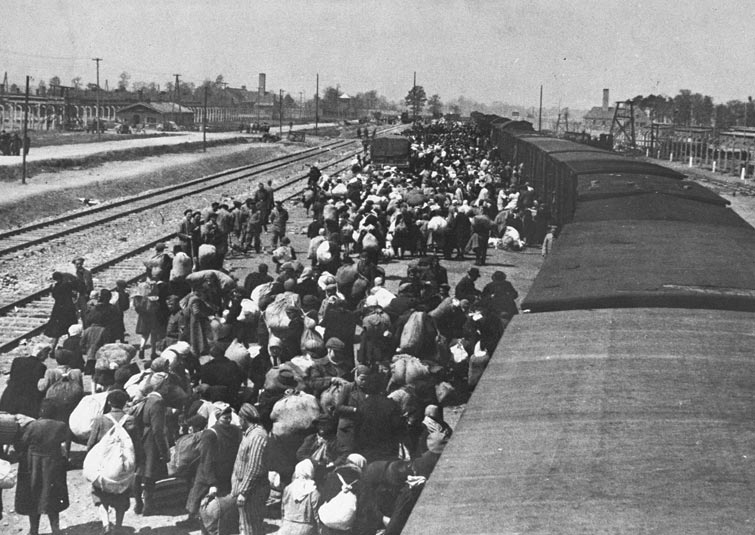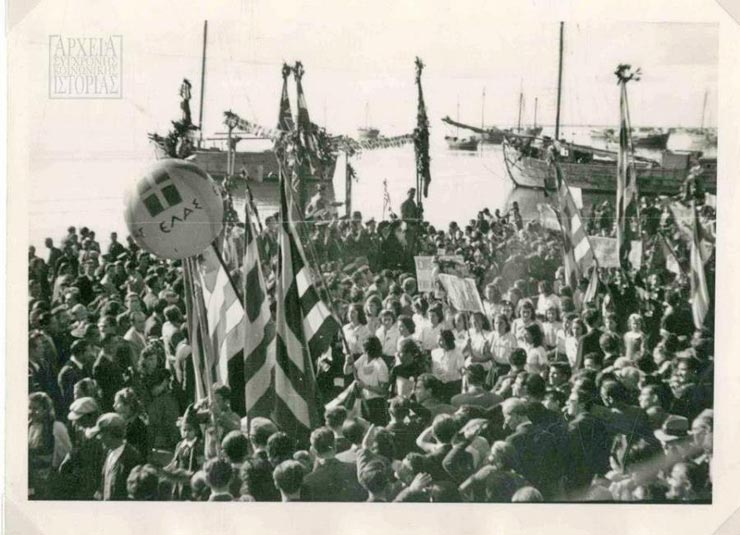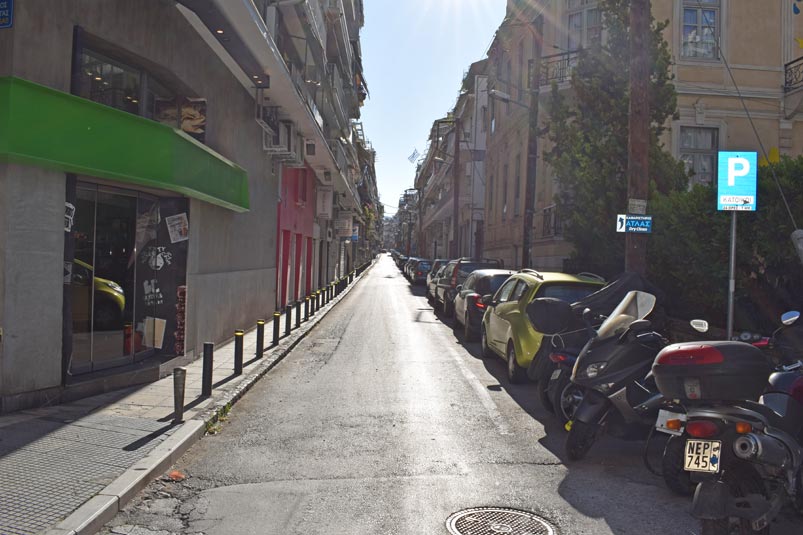Research Project:
Post-war transformation of Thessaloniki and the fate of the Jewish assets

Venizelos Street during 1957-58 in postwar Thessaloniki
The project aims at studying the fate of Jewish assets in postwar Thessaloniki. Before the Second World War, Thessaloniki was home to a thriving Jewish Community numbering about 50.000 people. In 1941 Greece fell under triple occupation (Germany, Italy and Bulgaria) and Thessaloniki under German occupation. February 1943 marked the beginning of the Jewish persecution with a series of anti-Semitic measures (the yellow star, movement restriction, confinement to ghettos), and in March the deportation to the death camp of Auschwitz-Birkenau began. 46,061 Jews were deported with 19 transports in total; and less than 2,000 returned alive.

The arrival of the transports at Auschwitz and the selection process for the gas chambers
In March 1943 all Jewish assets were transferred to the administration of the Service for the Disposal of Jewish Properties (YDIP), a new agency that was founded by the Greek collaborationist regime by order of the Germans. The agency was engaged with the task of disposing all Jewish assets to new administrators, the “custodians”.
The new agency appointed two to three-member teams of evaluators who followed a certain procedure to assess the properties. The procedure included on-site registration, inventory and evaluation of the merchandise and fixed assets of each company, sealing of the enterprise - company and handing of the keys to the agency. According to the plan the keys along with the relevant paperwork were to be delivered to the new administrators who would pay a fix rent.
YDIP offered a mask of legitimacy to the methodical expropriation of the Jewish movable property. The immovable properties were extensively given to those who cooperated with the Germans and the collaborationist regime. Only a small percentage and not of great value was given to refugees from the Bulgarian-occupied areas or to people in real need. The movables (merchandise from businesses and furniture from homes) were looted bringing huge sums of money to Germans themselves, such as the military counselor of the Military Administration of Thessaloniki-Aegean Maximilian Merten, and their associates.
After the liberation and the end of the Second World War, the magnitude of the looting became apparent.

The liberation of Thessaloniki October 30th, 1944
It was not before 1949, after 4 years of systematic efforts, that OPAIE, the Organization for the Relief and Rehabilitation of the Greek Israelites, also known as Heirless Property and Jewish Rehabilitation Fund was established. The new organization undertook the difficult task of finding and determining the fate of the Jewish real estate that had been exploited.
The research project
The research project “Post-war transformation of Thessaloniki and the fate of the Jewish assets” is conducted under the auspices of the Hellenic Foundation for Research & Innovation (HFRI) and the General Secretariat for Research and Technology (GSRT). Host institute for the project is the Aristotle University of Thessaloniki (AUTh) under the supervision of the Chair of Jewish Studies and the administration/financial management of the Research Committee (Special Account for Research Funds).
Even though 75 years have passed since the end of Second World War, it has not been largely ascertained what happened to the Jewish properties in Thessaloniki. The ongoing research project aims to study relevant archives (OPAIE, Land Registry Office, Historical Archive of Macedonia – General State Archives, Jewish Museum of Thessaloniki) and to collect testimonies in order to find out what exactly happened to the Jewish immovable and movable properties.
Focusing on Venizelos (Vasileos Konstantinou - King Constantine during the occupation) and Miaoulis streets, in the centre and east of the city’s centre respectively, the research project will present the changes in the commercial and residential map of Thessaloniki from the liberation and the interwar period to the post-war period.
The presence of Jewish professionals on Venizelos Street, was dynamic and continuous. Venizelos Street is still one of the busiest commercial places of the city.
Miaoulis Street, in the old area called Kalamaria in the first decades of the 20th century, together with the neighboring Misrahi Street, today Fleming Street, housed many Jews coexisting with Christians. Large Jewish institutions in the neighborhood, such as Hirsch Hospital, today's Hepocrates Hospital constitute common points of reference and evidence of the active Jewish presence in the area.

Miaoulis Street during the CovID pandemic April 2020
After the war, the urban reconstruction with multistory buildings changed the image of the street completely, while the Jewish presence is now minimal.
The results of the research project will be presented in events open to the university community and the general public, in collaboration with organizations such as the Municipality of Thessaloniki and the Jewish Community of Thessaloniki. An edited volume and this website will support the dissemination of the results of the project that will be complemented by the presentation in universities and institutes abroad.


